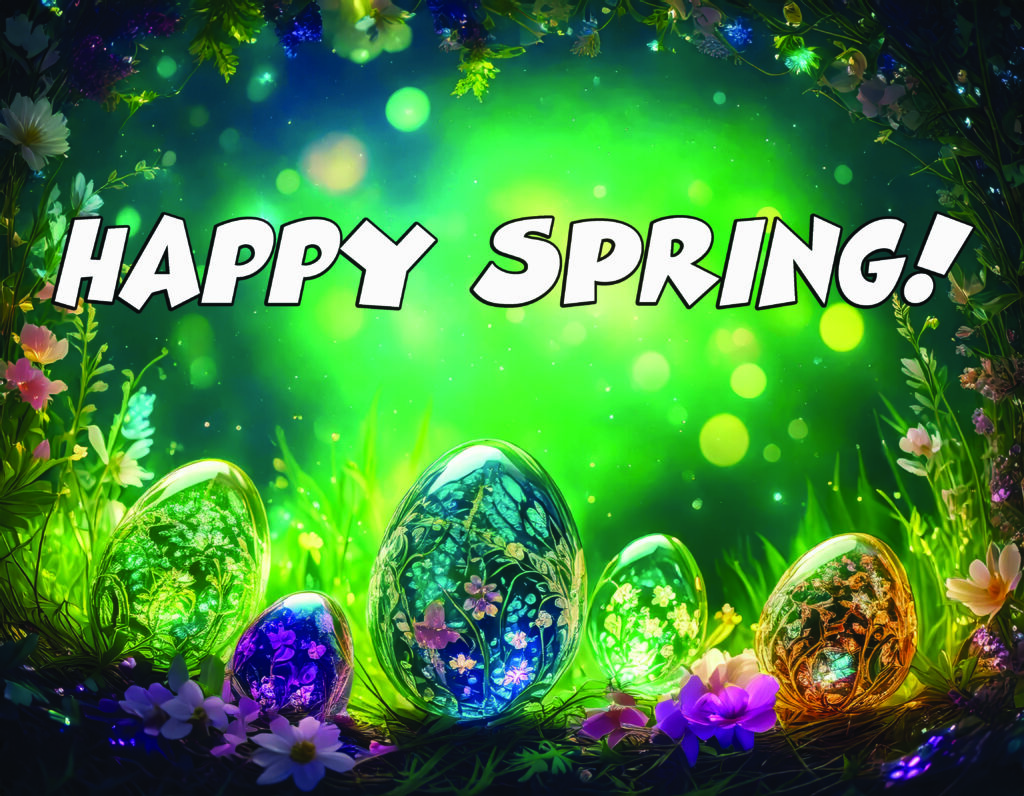 A point of perfect balance on the journey through the Wheel of the Year. Night and day are of equal length and in perfect equilibrium – dark and light, masculine and feminine, inner and outer, in balance. But the year is now waxing and at this moment light defeats the dark. The natural world is coming alive, the Sun is gaining in strength and the days are becoming longer and warmer. The gentle whispered promise of Imbolc is fulfilled in the evident and abundant fertility of the Earth at Ostara. It is time for the hopes of Imbolc to become action. The energy is expansive and exuberant. It is the first day of Spring! Ostara takes its name after the Germanic goddess, Eostre/Ostara, who was traditionally honoured in the month of April with festivals to celebrate fertility, renewal and re-birth. It was from Eostre that the Christian celebration of Easter evolved, and indeed the naming of the hormone Eostrogen, essential to women’s fertility.
A point of perfect balance on the journey through the Wheel of the Year. Night and day are of equal length and in perfect equilibrium – dark and light, masculine and feminine, inner and outer, in balance. But the year is now waxing and at this moment light defeats the dark. The natural world is coming alive, the Sun is gaining in strength and the days are becoming longer and warmer. The gentle whispered promise of Imbolc is fulfilled in the evident and abundant fertility of the Earth at Ostara. It is time for the hopes of Imbolc to become action. The energy is expansive and exuberant. It is the first day of Spring! Ostara takes its name after the Germanic goddess, Eostre/Ostara, who was traditionally honoured in the month of April with festivals to celebrate fertility, renewal and re-birth. It was from Eostre that the Christian celebration of Easter evolved, and indeed the naming of the hormone Eostrogen, essential to women’s fertility.
The Symbols of Ostara are:
The Hare
In Celtic tradition, the hare is sacred to the Goddess and is the totem animal of lunar goddesses such as Hecate, Freyja and Holda – the hare is a symbol for the moon. The Goddess most closely associated with the Hare is Eostre, or Ostara. The date of the Christian Easter is determined by the phase of the moon. The nocturnal hare, so closely associated with the moon which dies every morning and is resurrected every evening, also represents the rebirth of nature in Spring. Both the moon and the hare were believed to die daily in order to be reborn – thus the Hare is a symbol of immortality. It is also a major symbol for fertility and abundance as the hare can conceive while pregnant. Over the centuries the symbol of the Hare at Ostara has become the Easter Bunny who brings eggs to children on Easter morning, the Christian day of rebirth and resurrection. Hare hunting was taboo but because the date of Easter is determined by the Moon together with the Hare’s strong lunar associations, hare-hunting was a common Easter activity in England (and also at Beltane).
The Egg
The egg (and all seeds) contains ‘all potential’, full of promise and new life. It symbolises the rebirth of nature, the fertility of the Earth and all creation. In many traditions the egg is a symbol for the whole universe. The ‘cosmic’ egg contains a balance of male and female, light and dark, in the egg yolk and egg white. The golden orb of the yolk represents the Sun God enfolded by the White Goddess, perfect balance, so it is particularly appropriate to Ostara and the Spring Equinox when all is in balance for just a moment, although the underlying energy is one of growth and expansion.
All Spring Flowers
Daffodils, primroses, violets, crocuses, celendine, catkins, pussy willow in profusion.
Colours
Bright green, yellow and purple
Trees of Ostara
Birch, Ash, Alder
Excerpt from The Kaslo Crow
